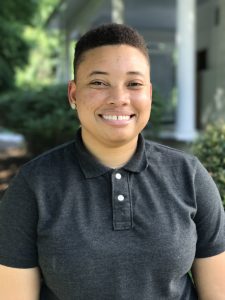by Elliott Golden
On the face of it, West Brooklyn Community High School is a transfer school in the New York City public School system, a second, third, or fourth chance at a high school diploma for its students. Recent graduating seniors described West Brooklyn as so much more. It was a place where challenges and difficulties were embraced, a place where opportunities and value existed beyond statewide Regents Exams. At West Brooklyn, school was a community where young people who had not felt support or security in much of their lives were able to find a safe space. I was proud to have been a small piece of that space.
In 2018 and 2019, supported by the Center for Documentary Studies’ Lewis Hine Fellowship, I have played a few roles at WBCHS. I have run after-school programs in videography and photography, engaged with students on photo and video projects outside of the classroom, and assisted in the production of slam poetry videos, the school yearbook and other short-term media-based projects. I have become part of a community that cares about each other, that takes a holistic approach to educating, that cultivates responsible adults, not test scores.
In our collaborative book, Safe Enough To Bloom, photographic portraits and transcribed conversations are meant to represent not so much the individual experiences of each student, but rather their common denominator: strength in the face of an often callous educational system and the important and inspiring work done at WBCHS to rectify these circumstances.
Safe Enough to Bloom is separated into three sections and a preface. In the first section, students discuss their experiences at school before arriving at West Brooklyn; in the second, their adjustments and different experiences at West Brooklyn. The final section, which breaks a strict chronological sequence, explores broader lessons and messages that might be drawn from the overall experience.
The transcribed conversations which make up this book’s text were primarily conducted by the students themselves and recorded on their cell phones. Prompted by the question “How would you change the education system?” they flowed freely, without boundaries on what might be discussed. I took the majority of the photographs, but several are the work of student photographers who would practice their technique during these outings. In those cases the student’s names are indicated, but in all cases, the portrait is a collaboration.
I came to West Brooklyn Community High School directly after graduating college, only a few years older than many of the students, but from very different circumstances. For better or worse, I tried to interpret the school and its students through my own lens, projecting a vision of what I thought to be true onto their reality. As I became more engaged in the school and had more honest conversations with the students—serious or silly, but honest—the illusion that I might assimilate their situations into my own worldview slipped away. In its place grew a more nuanced acknowledgement of the similarities and differences of our perspectives, particularly as young people navigating a hectic city. This collaboration is the product of that series of communications and miscommunications.


